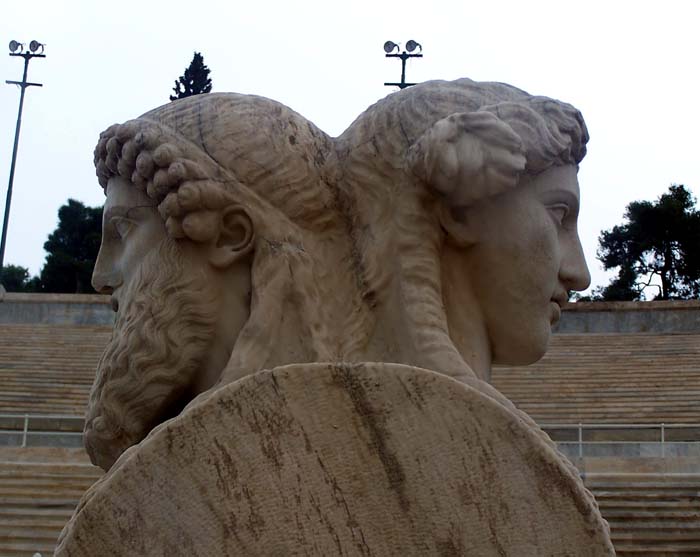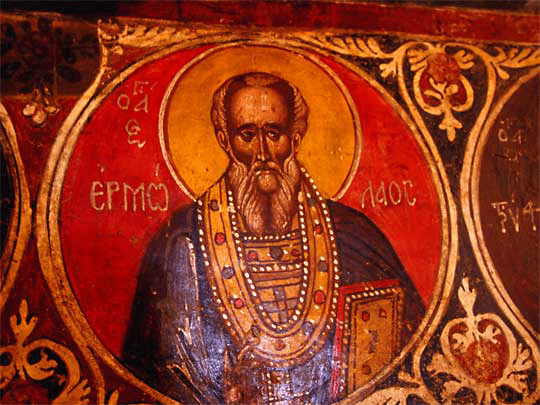| Greece has a rich and varied artistic history, most classy and riviting. Spanning some 5000 years and beginning in the Cycladic and Minoan prehistorical civilization, giving birth to Western classical art in the ancient period (further developing this during the Hellenistic Period), to taking in the influences of Eastern civilizations and the new religion of Orthodox Christianity in the Byzantine era and absorbing Italian and European ideas during Romanticism period (with the invigoration of the Greek Revolution), right up until the Modernist and Postmodernist periods. Greek art is mainy four forms: architecture, sculpture,painting and painted pottery. |
Byzantine art is the term created by the Eastern Roman Empire from about the 5th century until the fall of Constantinople in 1453. (The Roman Empire during this period is conventionally known as the Byzantine Empire.) The term can also be used for the art of states which were contemporary with the Byzantine Empire and shared a common culture with it, without actually being part of it, such as Bulgaria, Serbia or Russia, and also Venice, which had close ties to the Byzantine Empire despite being in other respects part of western European culture. It can also be used for the art of peoples of the former Byzantine Empithisre under the rule of zhdfzdfhthe Ottoman Empire after 1453. In some respects the Byzantine artistic tradition has continued in Russia and other Eastern Orthodox countries to the present day.
Byzantine art grew from the art of Ancient Greece, and at least before 1453 never lost sight of its classical heritage, but was distinguished from it in a number of ways. The most profound of these was that the humanist ethic of Ancient Greek art was replaced by the Christian ethic. If the purpose of classical art was the glorification of man, the purpose of Byzantine art was the glorification of God, and particularly of his son, Jesus.
In place of the nude, the figures of God the Father, and became the dominant - indeed almost exclusive - focus of Byzantine art. One of the most important forms of Byzantine art was, and still is, the icon: an image of Christ, the Virgin (particularly the Virgin and Child), or a saint, used as an object of veneration in Orthodox churches and private homes. |
| Due to the Ottoman occupation of Greece, there was very little artistic output during this time, so the birth of modern Greek art began in defacto terms at the start of the 19th century (the end of the Greek War of Independence was in 1829) and took on board a number of Romanticism influences, most notably from Italy. The culmination of this was the distinctive style of Greek Romanticist art, inspired by revolutionary ideals as well as the particular geography and long history of the country. One of the major figures of the Modernist period is Fotis Kontoglou. His diverse contribution to Modern Greek Painting could be summarised into three manifestations. His creative painting work, which was based on the Byzantine technique; his hagiographic work, which brought orthodox painting back to our churches; and, finally, his teaching, either direct or (mainly) indirect, which was one of the strongest factors which altered the course of Modern Greek Painting towards the discovery of the pictorial but, also, of the more substantial spiritual values of the Greek traditions that they used when they were worshiping. |


